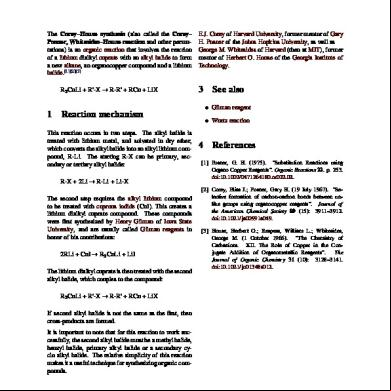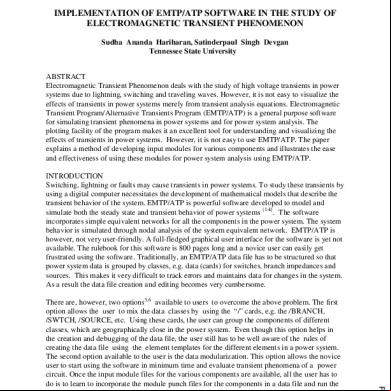Gingival Veneers 4l452z
This document was ed by and they confirmed that they have the permission to share it. If you are author or own the copyright of this book, please report to us by using this report form. Report 3b7i
Overview 3e4r5l
& View Gingival Veneers as PDF for free.
More details w3441
- Words: 884
- Pages: 22
An alternative treatment approach to gingival recession: gingiva-colored partial porcelain veneers: A clinical report Nuray Capa, DDS, MSc, PhDa Yeditepe University, Istanbul, Turkey (J Prosthet Dent 2007; 98: 82-84.)
Presented by Soumya P.G Prosthodontics
• Loss of tooth structure and the surrounding periodontal soft tissues may occur due to abrasion, erosion, caries etc.. . • Hard and soft tissue loss can result in enlarged gingival embrasures and increased crown length causing esthetic problems and hypersensitivity.
• Selecting the best esthetic, prosthetic treatment for teeth with gingival recession in the anterior region may be challenging • Some authors suggest alternative, conservative prosthodontic treatments for lost papillae, such as • a gingival flange retained by precision attachments, • a fixed prosthesis with gingiva-colored ceramics, • restoration with gingiva-colored composite resins, • or a removable gingival prosthesis.
• This clinical report describes treatment for excessive tissue loss around natural teeth using gingiva-colored partial (G) porcelain laminate veneers.
• A 30-year-old white woman was referred to the Department of Prosthetic Dentistry, Istanbul, Turkey. • Her complaint was the unaesthetic appearance of her maxillary right and left central incisors due to gingival recession after periodontal treatment • The patient occasionally reported hypersensitivity of the involved teeth.
• Prior to rendering treatment initial periodontal therapy and periodontal regeneration procedures were performed. Healthy periodontal tissues were achieved • The use of gingiva-colored ceramics in conjunction with a fixed prosthesis has been reported for treatment of gingival recession. • However, this procedure requires extensive preparation of teeth, resulting in significant hard tissue loss
• Direct pink-colored composite resins may also be used to restore unesthetic appearances caused by gingival recession and to decrease dental hypersensitivity. • However, composite resins are susceptible to discoloration, marginal fractures, and wear. • Due to the young age of the patient, an invasive treatment approach such as full crown preparation was not selected
• G porcelain laminate veneers were preferred in this situation because of their biocompatibility, color stabilization, and nonporous surface, which prevents plaque adherence better than composite resin.
• The gingivally recessed region was restored with pink partial laminate veneers to mask the increase in the crown length
• Minimal preparation and restoration with G porcelain laminate veneers was performed only in the area with gingival recession, thus reproducing the anatomic crown.
• A diagnostic waxing was developed by covering the gingival area with pink wax to imitate the gingiva
• Root surfaces were prepared to provide adequate space for the G porcelain laminate veneers. • 0.5- mm labial reduction was performed
A chamfer preparation was used for the gingival margin of the teeth using a medium-grid chamfer diamond rotary cutting instrument –to maximize the esthetics and maintain gingival marginal health
• The impression was made with addition silicone material . • The impression and an intraoral photograph were sent to the dental laboratory technician. • The lack of a scale for selecting proper gingival color made shade selection difficult. • The intraoral photograph helped the technician in selecting the proper gingival color
• The G porcelain laminate veneers were fabricated using IPS Empress Esthetic (Ivoclar Vivadent AG, Schaan, Liechtenstein). • To obtain the natural pink color of the gingiva, basic red color (IPS Empress Universal Stains; Ivoclar Vivadent AG) and Essence terra color (IPS e.max; Ivoclar Vivadent AG) were used during the fabrication of G porcelain laminate veneers.
• The G porcelain laminate veneers were shaped to conform with the anatomic contours of the maxillary incisors. • Laboratory preparations of the porcelain laminate veneers were completed after glazing with universal glazing paste (IPS Empress; Ivoclar Vivadent AG). • The restorations were cemented with an adhesive system (Variolink II; Ivoclar Vivadent AG
• Hydrofluoric acid was used for 60 seconds to etch the G porcelain veneers. • After rinsing and drying the veneers, silane (Monobond-S; Ivoclar Vivadent AG)was applied on the etched surfaces. • Surfaces were air-dried for 60 seconds. • Bonding agent (Heliobond;Ivoclar Vivadent AG) was applied with a brush on the porcelain laminate veneers and thinned with an air syringe for 5 seconds.
• The prepared root surfaces were etched for 15 seconds with 37% phosphoric acid • Rinsed with water for 15 seconds and gently dried with an air syringe. • Primer was applied for 15 seconds • dentinal adhesive was applied for 10 seconds. • Bonding agent was then applied with a brush
• A transparent shade of a dual-polymerizing resin-based luting cement shade was mixed for 10 seconds and placed in the preparation. • Then porcelain laminate veneers were placed. • Excess resin cement was removed and polymerized for 40 seconds. • After 5 minutes excess was removed from marginal areas with polishing discs.
• The patient was recalled after 1 week • and 6 months • The patient reported that tooth hypersensitivity had disappeared
• By restoring the recessed regions with the G porcelain laminate veneers, the esthetic demands of the patient were fulfilled and the hypersensitivity was alleviated. • Increased use of this method may encourage the dental ceramic manufacturers to develop ranges of gingival color to provide optimal results.
SUMMARY • G porcelain laminate veneers may be an alternative prosthetic procedure to treat advanced tissue loss, achieving acceptable esthetic results and patient satisfaction. • This method preserves the remaining tooth structure with minimal invasive hard tissue loss.
Presented by Soumya P.G Prosthodontics
• Loss of tooth structure and the surrounding periodontal soft tissues may occur due to abrasion, erosion, caries etc.. . • Hard and soft tissue loss can result in enlarged gingival embrasures and increased crown length causing esthetic problems and hypersensitivity.
• Selecting the best esthetic, prosthetic treatment for teeth with gingival recession in the anterior region may be challenging • Some authors suggest alternative, conservative prosthodontic treatments for lost papillae, such as • a gingival flange retained by precision attachments, • a fixed prosthesis with gingiva-colored ceramics, • restoration with gingiva-colored composite resins, • or a removable gingival prosthesis.
• This clinical report describes treatment for excessive tissue loss around natural teeth using gingiva-colored partial (G) porcelain laminate veneers.
• A 30-year-old white woman was referred to the Department of Prosthetic Dentistry, Istanbul, Turkey. • Her complaint was the unaesthetic appearance of her maxillary right and left central incisors due to gingival recession after periodontal treatment • The patient occasionally reported hypersensitivity of the involved teeth.
• Prior to rendering treatment initial periodontal therapy and periodontal regeneration procedures were performed. Healthy periodontal tissues were achieved • The use of gingiva-colored ceramics in conjunction with a fixed prosthesis has been reported for treatment of gingival recession. • However, this procedure requires extensive preparation of teeth, resulting in significant hard tissue loss
• Direct pink-colored composite resins may also be used to restore unesthetic appearances caused by gingival recession and to decrease dental hypersensitivity. • However, composite resins are susceptible to discoloration, marginal fractures, and wear. • Due to the young age of the patient, an invasive treatment approach such as full crown preparation was not selected
• G porcelain laminate veneers were preferred in this situation because of their biocompatibility, color stabilization, and nonporous surface, which prevents plaque adherence better than composite resin.
• The gingivally recessed region was restored with pink partial laminate veneers to mask the increase in the crown length
• Minimal preparation and restoration with G porcelain laminate veneers was performed only in the area with gingival recession, thus reproducing the anatomic crown.
• A diagnostic waxing was developed by covering the gingival area with pink wax to imitate the gingiva
• Root surfaces were prepared to provide adequate space for the G porcelain laminate veneers. • 0.5- mm labial reduction was performed
A chamfer preparation was used for the gingival margin of the teeth using a medium-grid chamfer diamond rotary cutting instrument –to maximize the esthetics and maintain gingival marginal health
• The impression was made with addition silicone material . • The impression and an intraoral photograph were sent to the dental laboratory technician. • The lack of a scale for selecting proper gingival color made shade selection difficult. • The intraoral photograph helped the technician in selecting the proper gingival color
• The G porcelain laminate veneers were fabricated using IPS Empress Esthetic (Ivoclar Vivadent AG, Schaan, Liechtenstein). • To obtain the natural pink color of the gingiva, basic red color (IPS Empress Universal Stains; Ivoclar Vivadent AG) and Essence terra color (IPS e.max; Ivoclar Vivadent AG) were used during the fabrication of G porcelain laminate veneers.
• The G porcelain laminate veneers were shaped to conform with the anatomic contours of the maxillary incisors. • Laboratory preparations of the porcelain laminate veneers were completed after glazing with universal glazing paste (IPS Empress; Ivoclar Vivadent AG). • The restorations were cemented with an adhesive system (Variolink II; Ivoclar Vivadent AG
• Hydrofluoric acid was used for 60 seconds to etch the G porcelain veneers. • After rinsing and drying the veneers, silane (Monobond-S; Ivoclar Vivadent AG)was applied on the etched surfaces. • Surfaces were air-dried for 60 seconds. • Bonding agent (Heliobond;Ivoclar Vivadent AG) was applied with a brush on the porcelain laminate veneers and thinned with an air syringe for 5 seconds.
• The prepared root surfaces were etched for 15 seconds with 37% phosphoric acid • Rinsed with water for 15 seconds and gently dried with an air syringe. • Primer was applied for 15 seconds • dentinal adhesive was applied for 10 seconds. • Bonding agent was then applied with a brush
• A transparent shade of a dual-polymerizing resin-based luting cement shade was mixed for 10 seconds and placed in the preparation. • Then porcelain laminate veneers were placed. • Excess resin cement was removed and polymerized for 40 seconds. • After 5 minutes excess was removed from marginal areas with polishing discs.
• The patient was recalled after 1 week • and 6 months • The patient reported that tooth hypersensitivity had disappeared
• By restoring the recessed regions with the G porcelain laminate veneers, the esthetic demands of the patient were fulfilled and the hypersensitivity was alleviated. • Increased use of this method may encourage the dental ceramic manufacturers to develop ranges of gingival color to provide optimal results.
SUMMARY • G porcelain laminate veneers may be an alternative prosthetic procedure to treat advanced tissue loss, achieving acceptable esthetic results and patient satisfaction. • This method preserves the remaining tooth structure with minimal invasive hard tissue loss.










